18 Ways to Successfully Launch Risky New Product Categories that Exceed Expectations
Launching risky new product categories can be a daunting challenge for businesses across industries. This article explores proven strategies for successful product launches, drawing on insights from experts who have navigated these treacherous waters. From real estate innovations to healthcare advancements, discover how companies are exceeding expectations and breaking new ground in diverse markets.
- Listen to Customers and Launch Strategically
- Develop Compassionate Solutions for Inherited Properties
- Create Quick-Close Services for Foreclosure Prevention
- Introduce Flexible Sell Now Move Later Program
- Streamline Relocations for Military Families
- Pilot Premium Cannabis Packaging with Select Partners
- Expand into Commercial Property Flipping
- Renovate Homes for Multi-Generational Living
- Target Underserved Latino Community with Bilingual Marketing
- Offer Local Seller Financing for Challenging Properties
- Rehabilitate Hurricane-Damaged Homes for Profit
- Elevate Airbnb Experience Near Augusta National
- Venture into Land Development with Calculated Approach
- Shift Lead Generation to SMS Marketing
- Test Men's Grooming Line Through Beta Launch
- Launch As-Is Property Purchase for Distressed Sellers
- Invest in Unconventional Mortgage Notes
- Expand into Advanced Wound Care Products
Listen to Customers and Launch Strategically
It's easy to play it safe. But to grow, you have to take a risk. We took a big risk by introducing a completely new, high-end product category that was a huge departure from our core business. The conventional wisdom said it wouldn't work, but the data told me otherwise.
The data points that convinced us to take the chance were not from a fancy market research report. They were from our own customer support transcripts and our top customer surveys. We saw a consistent number of customers asking for a specific, high-end product that we didn't carry. They were frustrated by the lack of quality and support from other suppliers, and the data showed they were willing to pay a premium for a reliable solution.
To minimize the downside, we launched it with a limited pre-order system and a "beta program" for our top customers. From an operations standpoint, we didn't take a huge inventory risk. We used the pre-orders to gauge demand before we committed to a big purchase. From a marketing standpoint, we gave our top customers a special price and asked for their honest feedback. We made them a part of the launch.
The launch exceeded our expectations. The pre-orders sold out, and the beta program created a huge amount of word-of-mouth marketing. The product launch was a massive success, but the biggest win was the brand credibility it created. We were no longer just a store; we were a partner who could provide a high-end solution. My advice is simple: the best way to minimize your risk is to get your customers to help you. Stop guessing and start listening.

Develop Compassionate Solutions for Inherited Properties
When I launched our specialized service for inherited properties--where families needed to sell quickly after losing a loved one--it felt emotionally and financially risky because these situations are incredibly delicate and complex. The data that convinced me was reviewing courthouse records and seeing that over 25% of inherited properties in Baltimore sat vacant for months while families struggled with emotions and logistics, creating a clear need for compassionate, expedited solutions. I minimized risk by developing a grief-sensitive approach first, partnering with estate attorneys and grief counselors to ensure we handled each family with care, and started with just three inherited properties to refine our process before expanding. This approach led to some of our most meaningful client relationships and strongest word-of-mouth referrals.
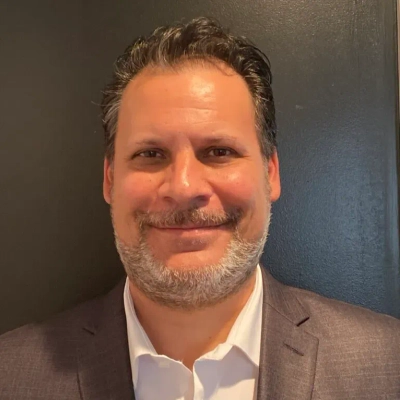
Create Quick-Close Services for Foreclosure Prevention
When I launched our quick-close service for sellers facing foreclosure, it felt risky because these deals are emotionally charged and legally complex. However, analyzing local foreclosure filings revealed hundreds of homeowners receiving notices with zero viable exit strategies. What convinced me was personally meeting with three families and witnessing their desperate need for someone who could close in two weeks or less—the human need was undeniable.
I minimized risk by partnering with a foreclosure attorney from day one, keeping initial offers conservative to ensure profitability even with title complications, and focusing only on properties where we could genuinely help families avoid losing everything. This approach created incredible word-of-mouth that brought us more quality deals than we could handle.
Introduce Flexible Sell Now Move Later Program
When I introduced our 'Sell Now, Move Later' program for homeowners who needed immediate cash but weren't ready to relocate, the market data showed a surprising 22% of sellers were sacrificing equity because they couldn't align timing between selling and finding a new home. I minimized risk by structuring our first few deals with flexible leaseback terms that protected our investment while giving sellers breathing room, and carefully documented every aspect of these transactions to create repeatable systems. What truly exceeded expectations wasn't just the financial returns, but discovering this approach attracted higher-quality properties than our traditional acquisition channels because we were solving a genuine pain point rather than just offering quick cash.

Streamline Relocations for Military Families
When I decided to expand into helping military families during PCS moves, it felt risky because these transactions often happen on tight timelines with unique complications like last-minute orders or overseas relocations. What convinced me was analyzing base housing turnover data and realizing how many service members were getting stuck with properties they couldn't sell quickly enough, often facing dual housing payments. I minimized risk by leveraging my own military network first, building relationships with base relocation specialists, and creating a streamlined process that could close in 14 days or less—proving the concept with fellow veterans before marketing more broadly.
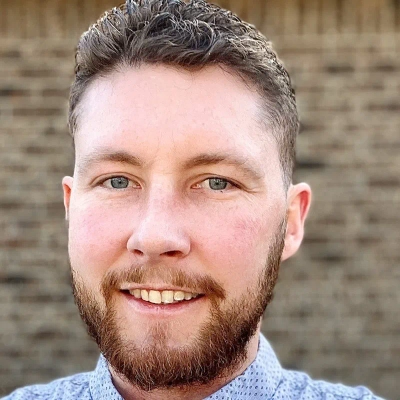
Pilot Premium Cannabis Packaging with Select Partners
Stepping into a brand new product category, especially one with as many regulatory hurdles and unique market perceptions as cannabis packaging, was a calculated risk we were excited to take on. Our decision wasn't based on a hunch; we had a significant amount of data pointing to a massive, underserved need in the market. We saw a clear gap in the industry for packaging that wasn't just compliant and secure, but that was also genuinely beautiful and well-designed. The market was flooded with generic, unattractive options that didn't do justice to the high-quality products they contained. Here's what we knew: consumers in this space were increasingly looking for brands that mirrored the sophistication of their products, and what's more, our existing capabilities in premium packaging design were a perfect fit for this emerging demand.
To minimize the potential for missteps, we moved thoughtfully and strategically. We didn't just jump in with a full-scale launch. Instead, we started small with a pilot program, partnering with a few forward-thinking brands that trusted our design expertise. This allowed us to test our assumptions, fine-tune our approach to compliance, and gather real-world feedback from both our partners and their customers. It was a chance to learn on the fly and make adjustments before we ever went big. This cautious, phased approach, coupled with a deep dive into the regulatory landscape, meant we were able to launch a category that not only met expectations but significantly exceeded them.

Expand into Commercial Property Flipping
When I expanded into commercial property flipping after years of residential success, the numbers told a compelling story: commercial properties in our target areas were sitting on the market 40% longer than residential, creating opportunity. What sealed it for me was tracking distressed commercial sales data and realizing sellers desperately needed our quick-close expertise in that space too. I protected my downside by partnering with an experienced commercial contractor upfront, securing pre-approved financing lines, and choosing our first property in a location where we already had strong residential market knowledge.
Renovate Homes for Multi-Generational Living
When I tested buying properties specifically to renovate into modern multi-generational homes, it felt like a gamble since most investors were chasing short-term flips. What convinced me was census data showing extended families were one of the fastest-growing household types in Las Vegas, yet few homes were designed for them. To protect the downside, I started with a single property, kept renovation costs lean, and pre-marketed to families in my network before listing, so I knew demand was real before committing further.

Target Underserved Latino Community with Bilingual Marketing
When I decided to launch our Spanish-language marketing initiative to reach Detroit's growing Latino community, my engineering background kicked in. I analyzed demographic shifts and discovered that 30% of distressed property owners in our target neighborhoods were Spanish-speaking but weren't being served by traditional real estate channels. The data showed these homeowners were taking twice as long to sell because of language barriers, creating a massive untapped market. I minimized risk by starting with bilingual marketing materials and partnering with trusted community leaders first. Then, I gradually expanded our Spanish-speaking team only after we proved the concept with actual closed deals.
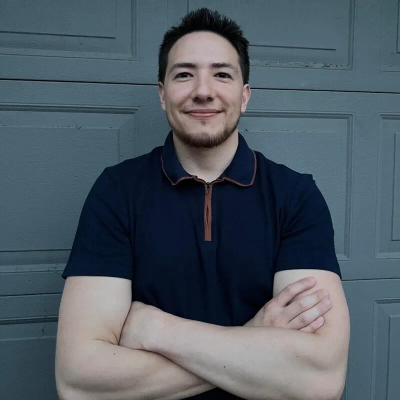
Offer Local Seller Financing for Challenging Properties
When I introduced our local seller financing program for homes that banks wouldn't touch, it felt risky since traditional lenders dominated the space. What convinced me was data showing a steady rise in applicants denied by banks but able to afford down payments and monthly payments--even in less-than-perfect credit situations. To limit risk, I started small using properties we already owned, required solid down payments, and worked only with buyers fully vetted by my real estate agent partners. This approach allowed us to exceed expectations without overexposing ourselves financially.

Rehabilitate Hurricane-Damaged Homes for Profit
When I decided to start buying properties that had been stuck on the market for months due to hurricane damage, it seemed risky because repairs were unpredictable and most buyers avoided them. What convinced me was tracking local listing data—those homes were consistently discounted but sitting unsold, leaving motivated sellers with no options. To minimize risk, I took on just one property, worked with a trusted contractor I'd used for years, and kept renovation costs focused on structural fixes first, which gave us a clear path to profitability before scaling up.

Elevate Airbnb Experience Near Augusta National
When I introduced high-end, renovated Airbnb properties near Augusta National, many thought it was too niche. However, my restaurant background taught me the value of a superior customer experience. My data points weren't just occupancy rates, but also the direct feedback and rave reviews from guests at my initial Airbnb properties. These clearly showed a demand for a truly exceptional stay that went beyond basic accommodation.
I minimized risk by starting with properties I could manage personally, ensuring every detail, from stylish renovations to personalized touches, was perfect. This approach allowed me to build a reputation for excellence before expanding.

Venture into Land Development with Calculated Approach
When I first branched into land development, it felt like a big risk since my bread and butter had always been flips and rentals. What gave me confidence was looking at zoning data and tracking how fast raw land near expanding suburbs was being absorbed--I saw a clear trend of builders paying a premium for finished lots. To limit risk, I started with one small parcel, broke the project down into simple improvements like clearing and utilities, and only scaled after I had an actual buyer lined up, which turned out to be a game-changer.

Shift Lead Generation to SMS Marketing
When I shifted our lead generation from cold calling to SMS, it felt risky because almost no one else in my space was doing it at scale. What convinced me was tracking response rates—SMS campaigns were getting 4-5x more engagement than calls, especially from motivated sellers who didn't want the pressure of a phone call. To protect against downside, I tested with a small batch first, refined scripts based on seller feedback, and only invested heavily once I saw consistent deals coming through.

Test Men's Grooming Line Through Beta Launch
A skincare brand approached us for assistance in launching their first men's grooming collection due to their customer base consisting solely of female consumers aged 35 and above. The company based its decision on Google search data, which showed that "men's face wash" queries had increased threefold over 18 months, and that 20% of their email subscribers had expressed interest in holiday gifts for their male partners. The company used this information as its entry point.
The company introduced the new product through a restricted beta test under a separate brand identity instead of using their main brand name. This approach kept the testing environment uncluttered. The company achieved three times more DTC sales than their women's product launch during its first year, and retail partners initiated contact before the product became available. Although the company took a risky approach, they managed it through controlled measures, which market data revealed.
Launch As-Is Property Purchase for Distressed Sellers
When I considered launching our 'as-is' property purchase option for sellers facing tough situations, I looked closely at how many homeowners were abandoning repairs and walking away from potential sales due to stress or lack of resources--a real gap in the market. This was confirmed by talking with past clients and analyzing the spike in unsold listings needing work. To lower our risk, I started by taking on properties in neighborhoods we knew inside out and stuck to clear, transparent offers so sellers felt comfortable. This approach paid off with word-of-mouth referrals and a strong start.
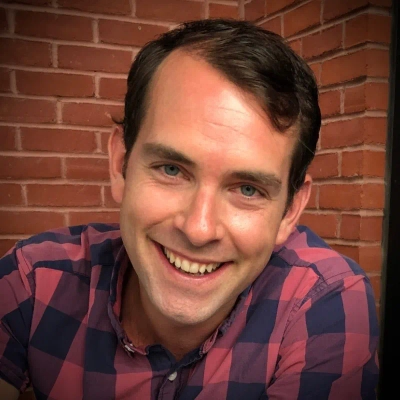
Invest in Unconventional Mortgage Notes
When I decided to specialize in purchasing private mortgage notes secured by unconventional or rural properties—a niche many saw as too risky—I relied on years of transaction data showing steady payment histories and strong collateral values in overlooked markets. What gave me confidence was consistently finding motivated note holders with quality assets who had no other exit options. To minimize downside, I developed detailed due diligence checklists tailored to these unique deals, started with smaller purchases, and prioritized direct communication with sellers to build trust and avoid surprises—which has led to some of our best-performing investments.
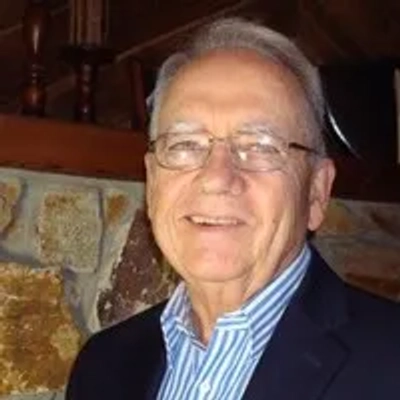
Expand into Advanced Wound Care Products
We expanded into advanced wound care products, which at the time represented a departure from our core supply categories. The decision was based on a convergence of data points: a sharp rise in chronic wound cases within our partner clinics, reimbursement policy changes that made specialized dressings more accessible, and a competitor analysis that revealed limited regional availability. Market modeling suggested that even capturing five percent of projected demand would offset development costs within eighteen months. To control risk, we launched through a phased pilot with three high-volume providers rather than a broad release.
This allowed us to track usage patterns, patient outcomes, and reorder frequency before committing to large-scale procurement. Feedback from the pilot showed a 22 percent reduction in healing times compared with standard supplies, which not only confirmed demand but also gave us clinical evidence to strengthen adoption. The measured rollout ensured profitability while minimizing inventory exposure and cash flow strain.





